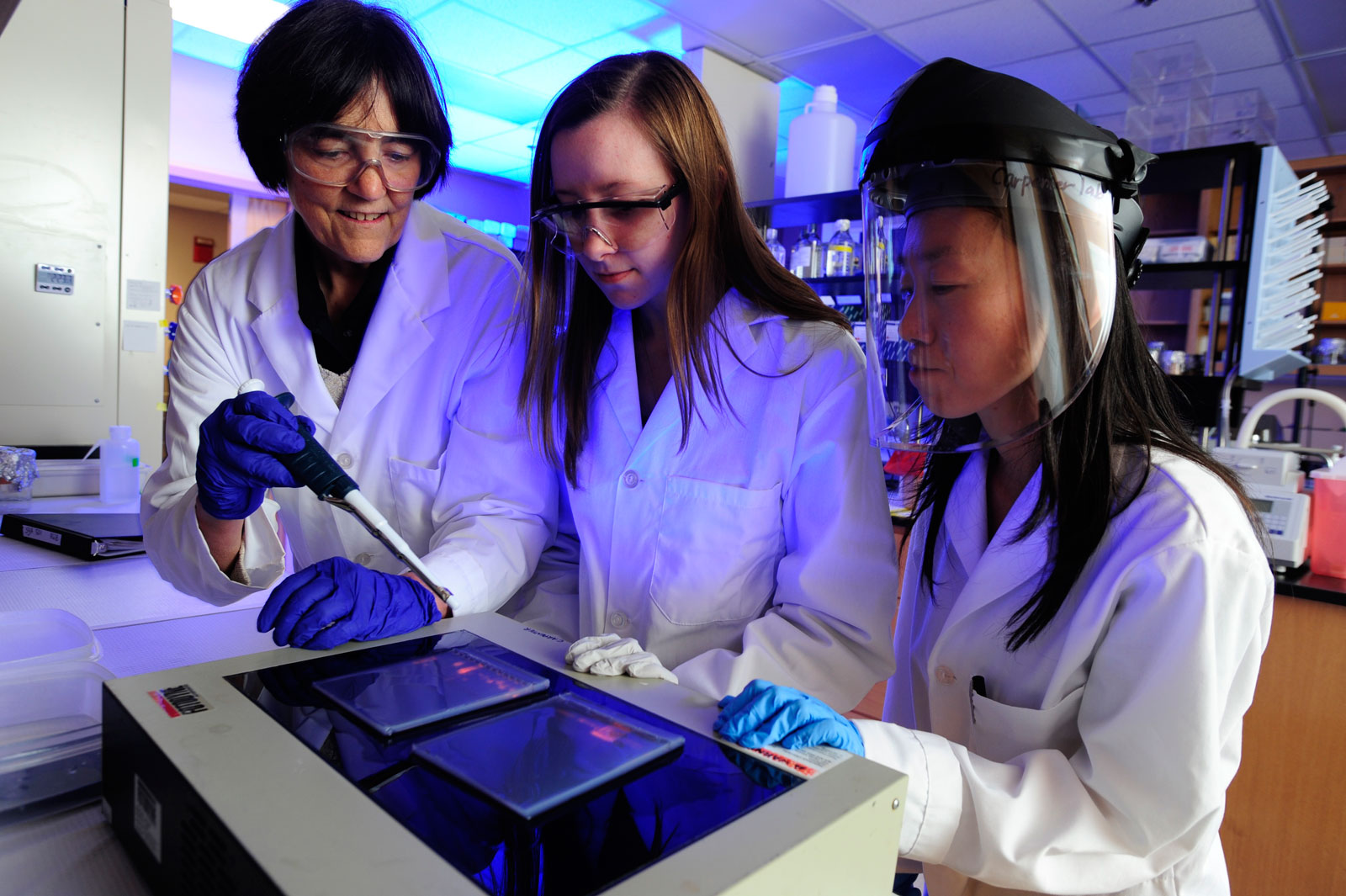
Study Of Equine Virus May Pave Way For Hiv Vaccine
The word lentivirus has its root in the Latin “lentus,” which means slow or lingering — an apt description for the chronic, persistent infections the virus causes in animals and people.
For the past 25 years, Susan Carpenter has studied the genetic strategies that allow lentiviruses to linger.
The professor of animal science studies equine infectious anemia virus, a lentivirus that afflicts horses and is a close relative of human immunodeficiency virus, HIV. That makes it a good model to inform new vaccine strategies for HIV and other persistent viruses and prevent the progression to AIDS and some cancers.
“The ability of lentiviruses to continually evolve and escape immune control is the main obstacle in developing effective vaccines for HIV and other persistent infections,” she says.
With equine infectious anemia, the horse’s immune system exerts some control over the lentivirus, although it can’t eliminate it.
In a way, it’s about prey and predator — a continually evolving virus in a continually adapting immune environment. Carpenter’s long-term studies explore the interplay between virus and host and how each tries to get the upper hand over time.
“How the virus persists in the face of a fairly effective immune response is something we want to know,” she says. “When a lentivirus can’t run, it hides in the genome. The knowledge we discover will help lead to the design of better, smarter vaccines that anticipate the virus’s next move.”
The research has earned support from the National Institutes of Health and USDA. Carpenter works with colleagues at ISU and at Washington State Universty, where a research herd of horses is maintained.
It’s a very integrated program, meshing expertise in molecular viology with computational modeling, protein structure and function, veterinary pathology and other disciplines to understand disease from the molecular to the in vivo level.
“Integrating all these ways of thinking is key to understanding virus-host interactions,” Carpenter says.
She has found that the horse’s immune response improves and broadens over time. At the same time, the wily lentivirus engages in a series of genetic tradeoffs to escape from attacking antibodies while maintaining its prime objective: replication.
“It’s like the lentivirus has a rheostat, dimming when it needs to evade attention and, after biding its time, brightening to optimize its survival.”
Does it sound like work that might leave a scientist shaking her head? Think again.
“How do we find the will to keep going, is that the question?” Carpenter says, laughing. “My perspective is that we’re trying to provide information to allow others to develop better vaccines. We have a model system we can learn from, and figure out fundamental principles that can apply to a variety of diseases.”
What she finds rewarding is constantly taking discoveries at the molecular level and placing them within the big picture of the disease.
“It’s a puzzle, and scientists like solving puzzles. No matter how arcane the molecular interactions might become, you always put them into context of what’s going on in vivo.”



